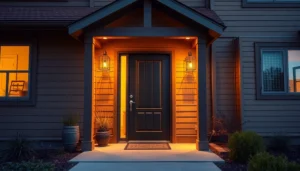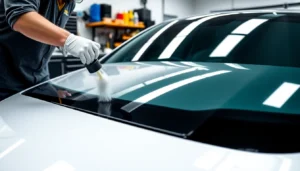
Choosing the Right Siding Contractor for Your Project
Understanding Different Siding Materials
Choosing the appropriate siding material is a fundamental step in ensuring the durability, aesthetics, and energy efficiency of your home’s exterior. Depending on your budget, climate, and desired appearance, options range from classic wood to modern fiber cement and vinyl siding. Here’s an overview of the most popular siding materials:
- Cedar and Wood Siding: Known for its natural beauty and versatility, wood siding offers a warm, timeless look. However, it requires regular maintenance against moisture, pests, and weathering.
- Vinyl Siding: Cost-effective, low-maintenance, and available in a myriad of styles and colors. Vinyl is resistant to pests and doesn’t require painting, but it can crack in extreme cold and may fade over time.
- Fiber Cement (Hardie Board): A durable composite material that mimics wood or stucco, offering excellent resistance to fire, pests, and weather. It’s a popular choice among many homeowners for longevity and aesthetic versatility.
- Metal Siding (Steel, Aluminum): Long-lasting and resistant to pests and fire, metal siding provides a sleek, modern look. It’s highly resistant to weather damage but can be prone to dents or corrosion if not properly maintained.
Understanding the pros and cons of each material helps you make an informed decision aligned with your home’s needs and your personal preferences. Consulting with a reputable siding contractor ensures you select the best option for your specific project.
Key Qualities of a Reliable Siding Contractor
Hiring a skilled contractor is crucial for a successful siding installation or replacement project. Here are the essential qualities to look for:
- Experience and Expertise: A contractor with extensive experience can handle various siding types and installations confidently, reducing the risk of errors and long-term issues.
- Proper Licensing and Insurance: Verify that the contractor holds necessary licenses which validate their competence and legal operation. Insurance protects you from liabilities due to accidents or damages on-site.
- Reputation and Reviews: Check online reviews, testimonials, and project portfolios to assess their track record. Top-rated companies often maintain high standards and customer satisfaction.
- Transparent Pricing and Estimates: An honest contractor provides detailed quotes, including labor, materials, permits, and potential extras, avoiding surprise expenses.
- Commitment to Quality and Safety: Ensure the contractor adheres to industry best practices, sustainable materials, and safety standards throughout the project.
Engaging with a licensed, insured, and highly-rated siding contractor minimizes risks, guarantees quality work, and offers peace of mind for your investment.
Questions to Ask Before Hiring a Siding Contractor
Preparing a list of critical questions helps you evaluate contractors thoroughly. Here are some key questions:
- Can you provide references from previous clients and examples of completed projects?
- Are you licensed and insured? Can I see proof of both?
- What brands or types of siding materials do you recommend and why?
- What is your typical project timeline? How do you handle potential delays?
- What warranties or guarantees do you offer on materials and workmanship?
- Will you handle permits and inspections required by local authorities?
- How do you ensure weatherproofing and long-term durability in your installations?
Asking these questions not only clarifies the scope and quality of the work but also helps establish mutual trust and clear communication channels.
Common Siding Installation Techniques and Best Practices
Preparation and Surface Assessment
Successful siding installation begins with a thorough surface assessment. The contractor should inspect the existing structure for damage, moisture intrusion, mold, and structural integrity. Removing old or damaged siding, repairing underlying sheathing, and ensuring a smooth, clean surface set the foundation for a long-lasting finish.
Preparation involves proper weather considerations—you want dry, stable days to prevent issues like warping or moisture entrapment. Accurate measurement, leveling, and marking are crucial to achieve uniform siding lines and a professional appearance.
Installation Methods for Vinyl, Hardie, and Cedar Siding
Different siding materials require specific installation techniques:
- Vinyl Siding: Installed in overlapping panels using nail or screw fasteners that allow for expansion and contraction. Proper spacing prevents buckling and cracking.
- Hardie Board (Fiber Cement): Usually installed with corrosion-resistant nails or screws, cement boards are often pre-drilled or nailed to furring strips to prevent moisture intrusion. Cutting is precise, often requiring specialized tools.
- Cedar and Wood Siding: Affixed with corrosion-resistant fasteners, ensuring proper nail spacing and placement to prevent warping. Overlap and sealing are vital to minimize water infiltration.
Each method emphasizes the importance of not only fastening but also sealing joints, corners, and edges to achieve weather-tight protection and aesthetic appeal.
Ensuring Durability and Weather Resistance
Durability hinges on meticulous installation practices:
- Proper ventilation behind the siding to prevent moisture buildup.
- Water-resistant barriers like house wraps to direct water away from framing.
- Sealed and finished edges to prevent water entry and pest infiltration.
- Correct flashing around windows, doors, and other penetrations.
Employing these techniques ensures your siding withstands harsh weather, UV exposure, and time, preserving your home’s integrity and appearance for decades.
Cost Factors and Budgeting for Siding Projects
Average Costs of Siding by Material Type
Siding costs vary significantly based on material choice, project scope, and regional labor rates. Here’s a breakdown of estimated costs:
- Vinyl Siding: $2.50 – $10.75 per square foot. For a typical 2,000 sq ft home, total costs range from approximately $5,000 to $21,500.
- Fiber Cement (Hardie): $5 – $13 per square foot, typically totaling $10,000 to $26,000 for 2,000 sq ft.
- Wood (Cedar): $6 – $12 per square foot, resulting in about $12,000 to $24,000 for a 2,000 sq ft home.
- Metal Siding: $3 – $8 per square foot, with an approximate total of $6,000 to $16,000 for 2,000 sq ft.
Note that higher-end materials, complex architectures, and additional features like insulation or specialty finishes increase overall costs.
Estimating Your Total Project Expenses
Accurately budgeting involves considering several factors:
- Material costs and quality choices
- Labor charges, typically 40-50% of total project costs, varying by location
- Permits and inspections, which can add to expenses
- Preparation and removal of old siding
- Additional features like soffits, fascia, trim, and insulation upgrades
Request detailed quotes from multiple contractors to compare prices and scope, ensuring transparency and value.
How to Save Money with Proper Planning
Strategic planning can significantly reduce costs:
- Choose durable, low-maintenance materials to decrease future repair and maintenance expenses.
- Plan for phased projects if facing budget constraints.
- Opt for energy-efficient siding options that can lower utility bills.
- Schedule work during off-peak seasons when labor rates may be lower.
- Negotiate discounts or package deals with trusted contractors.
Balancing quality with affordability ensures you maximize your investment.
Maintenance, Repairs, and Longevity of Siding
Routine Maintenance Tips from Siding Experts
Proper maintenance extends the life of siding and preserves curb appeal. Experts recommend:
- Regularly washing siding with mild detergent and water to prevent mold, dirt, and algae buildup.
- Inspecting for damage or loose panels after severe weather events.
- Repainting or sealing wooden siding every few years to prevent rot and deterioration.
- Applying touch-up paint or stain on cedar or wood siding to maintain color and protection.
Adhering to these practices ensures your siding maintains its appearance and function over time.
Identifying When Repairs Are Needed
Signs that your siding requires repair include:
- Cracks, chips, or warping in panels
- Fading or discoloration indicating UV damage or mold growth
- Leaks or water infiltration inside the home
- Pest infestations such as termites or carpenter ants
- Loose or missing panels after storms
Prompt repairs prevent further damage and costlier replacements, preserving your investment.
Strategies for Extending Siding Lifespan
In addition to routine maintenance, consider:
- Applying protective coatings or sealants suitable for your siding material.
- Ensuring proper drainage systems around your home to prevent moisture buildup.
- Addressing structural issues promptly to avoid impact on siding integrity.
- Choosing high-quality materials from reputable brands and suppliers.
Combining these strategies maximizes longevity, reducing replacement frequency and costs.
How to Choose a Top-Rated Siding Contractor Near You
Reading Reviews and Building Trust
Online platforms like Angi, Yelp, and Houzz provide comprehensive reviews and ratings for local siding contractors. Look for consistent positive feedback, detailed project descriptions, and high ratings (above 4.0). Reviewing before-and-after images helps verify craftsmanship quality. Additionally, ask your neighbors or friends for personal recommendations based on their experiences.
Licensing, Insurance, and Certifications
Verify that the contractor holds valid licensing per local regulations, indicating they meet professional standards. Insurance coverage—general liability and workers’ compensation—protects you from liability in case of accidents. Certifications from industry associations or manufacturer programs (e.g., James Hardie Elite Preferred Contractor) signify expertise and commitment to quality standards.
Requesting Quotes and Project Portfolios
Obtain written estimates from multiple contractors detailing scope, materials, timeline, and costs. Request portfolios of past work, especially projects similar to yours, to assess their style and quality. Engage with contractors who demonstrate professionalism, clarity, and transparency, establishing a foundation for a successful project.





